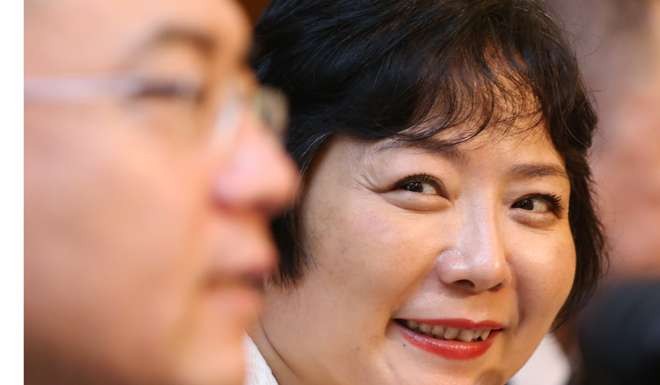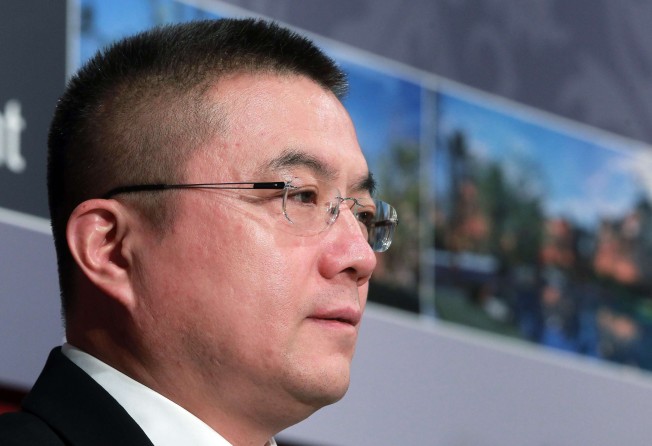
Longfor on the hunt for out-of-town shopping centre sites, but chief executive rules out foreign investment
Company speeding up expansion into malls in an effort to generate more stable forms of income

Real estate veteran Shao Mingxiao has remained as low key as his boss Wu Yajun, the founder and chairman of Longfor Properties, and once China’s richest woman.
Joining Longfor in 2006, Shao was very much Wu’s right-hand man, and was appointed chief executive officer in 2011 when she stepped down from the position.
Under Shao’s leadership, although Longfor’s expansion has lagged some of its rivals, it has received recognition from the capital market for its strong financial position, earning one of the highest ratings of any private mainland Chinese developers.
In October, S&P Global Ratings, for instance, raised its long-term corporate credit rating to ‘BBB-’ from ‘BB+’.
Shao says the company is now speeding up its expansion into shopping malls in an effort to generate more stable forms of income.
Rather than opening malls in downtown areas, he said the company is permanently on the hunt for property opportunities, especially in peripheral areas of larger cities.

Longfor has been expanding its presence in the shopping mall sector. What is your plan over the next five years?
We have learnt from the paths other Hong Kong developers have taken, and are now striving to increase recurring types of income. Every year we plan to use 20 per cent of our profits to develop shopping malls. We expect this year’s rental income to reach 2 billion yuan, and that would increase to 2.5 to 3 billion yuan next year, and then 5 billion yuan by 2020.
Rather than developing malls in downtown areas of some bigger cities, our plan is focus on regional malls. For example in Beijing, the city centre is hollowing out and there is serious traffic congestion meaning local people don’t want to shop downtown. A large number of Beijingers have moved to the outskirts of the city, for example, to between the city’s fifth and sixth ring roads, where there are around six million residents. The demand for regional malls is huge.
Do you feel increasing competition as the number of shopping malls continues to grow in China?
If there are several popular malls in the same area, you get what we call ‘a cluster effect’, allowing them to sometimes work together, running interactive events.
Not every developer is qualified to do commercial projects. Our advantage is our low financing costs. The average net property income of our commercial projects is more than 6 per cent, while our financing costs are about 5 per cent, and we expect the average to be below 5 per cent until the year end. We also have a stable commercial operations team with more than 10 years of experience, which is hard to compete against.
The company recently entered the co-working space sector - what was the attraction?
We are opening two “Easywork” co-working spaces by the end of the year, one in Beijing and one in Shanghai. They are considered trials and are still a very small part of the business. As our scale and sales income grows, we have ample funds to develop more. Overall, the commercial property sector will contribute about 11 per cent in our total profit this year, and that will reach 20 per cent by 2020.
Besides co-working spaces, we are also planning to develop serviced apartments, but we don’t yet have any specific sales targets for those as plans are still at a very early stage. We will gradually add new types of business to our portfolio.
What’s your outlook for China’s property market?
Long term, China’s property boom is yet to end. In cities like Beijing and Shenzhen, the upside potential is still huge. Just consider how fast people’s incomes are rising and the massive populations there, and you see demand will be very strong. In these cities, people buy homes both for their own use and for asset allocation purposes – there is still very healthy demand.
The recent policy tightening in Beijing that raised the second home down payment requirements to 70 per cent was pretty tough. But the sales of our new luxury project, The Orient Original, is still quite good.
Last year the new home supply in Beijing was about three million units, while annual transactions were about six million units. That mismatch in supply and demand guarantees the market will grow.
Will Longfor consider expanding overseas?
We will continue to focus on China’s property market, and have no plan to invest overseas. That said, we may consider Hong Kong, because we are listed here and compared with the US or Europe, the Hong Kong market is relatively familiar to us.